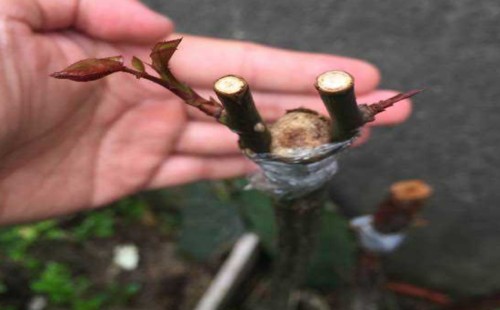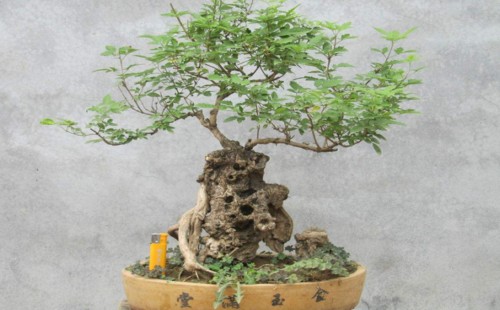How to water the bauhinia bonsai in the initial stage
Bauhinia is a kind of tree species with extremely tenacious vitality, which is not only lax to the soil environment, but also has a strong ability to adapt to the environment, so it is widely distributed in China. As the bauhinia is relatively easy to shape, especially the old stump looks old, but the leaves are very bright green, the two form a sharp contrast, so the ornamental value is also quite high, very durable, so it is made into bonsai by many bonsai friends.
The old Bauhinia pile is easy to survive after transplanting, but some old piles germinate slowly due to the influence of various factors, so it should be scientific and reasonable in water management. As the bauhinia is more drought-tolerant, the demand for water is not very large, but in order to maintain growth, it can not be allowed to be in a state of excessive drought. Generally speaking, the watering of bauhinia bonsai should grasp the principle of "see dry and wet dry, water thoroughly". So, how to water the bauhinia bonsai at the initial stage?
The phenomenon that Bauhinia bonsai is easy to appear in the initial stage is that some old stakes sprout slowly, but as long as the bark is still green, it shows that the trees have not withered. Therefore, the water cannot be cut off at this time, but the normal water supply should be carried out as usual. As long as the water can keep up, in general, when it comes to the Meiyu season, the old pile will sprout bright green buds. After survival, the old bauhinia pile should be maintained in a cool, non-direct light place for about 2 weeks, and then move it to a sunny position with smooth ventilation so that it can receive light to promote photosynthesis. After its growth is stable, we need to provide it with light, water and fertilizer to ensure that it can thrive.
In the process of watering the old bauhinia pile, watering is very critical, and it is usually necessary to adopt the principle of "do not dry or dry or pour thoroughly", and usually spray foliar water on the tree to keep it moisture. otherwise, it is not only easy to cause dehydration and droop and wilting of the leaves, but also may grow larger even if the leaves grow normally. For the stump bonsai, the smaller the leaves are, the higher the ornamental value is. Therefore, in order to avoid affecting the ornamental effect of Bauhinia bonsai, we have to consider the preventive measures of leaf growth in advance.
During the growing period, due to the relative increase in water demand for bauhinia bonsai, watering should be timely to ensure that the potted soil is always moist and will not grow badly due to lack of water. Although Bauhinia is more drought-tolerant, if the basin soil is too dry in the growing season, it will often lead to yellowing and shedding of the leaves near the base of the branches. And spring sprouting and pruning should also timely control the water, mainly in order to make the branches of bauhinia shorter, so that its leaves become smaller, so as to improve the ornamental nature of bonsai. However, it should be noted that the water consumption in winter is relatively small, and the water should be strictly controlled, even if it is not watered throughout the winter, the impact is usually small.
Time: 2019-06-06 Click:
- Prev

How to graft tree stump rose
Rose is a kind of tufted shrub with no obvious trunk, and in order to cultivate rose bonsai with stump characteristics, it is often necessary to adopt grafting means. The stump that can be used for grafting rose mostly uses rose as rootstock, at the same time, rootstock is required to grow healthily, root system is well developed, and there are no diseases and insect pests.
- Next

How does the yellow leaf shrink?
Vitex negundo bonsai is not only unique tree shape, its leaves are also very green, so the ornamental value is very high. However, its strange modeling effect is often artificially created, not born. However, the branches of the environment are relatively hard and relatively weak.
Related
- Fuxing push coffee new agricultural production and marketing class: lack of small-scale processing plants
- Jujube rice field leisure farm deep ploughing Yilan for five years to create a space for organic food and play
- Nongyu Farm-A trial of organic papaya for brave women with advanced technology
- Four points for attention in the prevention and control of diseases and insect pests of edible fungi
- How to add nutrient solution to Edible Fungi
- Is there any good way to control edible fungus mites?
- Open Inoculation Technology of Edible Fungi
- Is there any clever way to use fertilizer for edible fungus in winter?
- What agents are used to kill the pathogens of edible fungi in the mushroom shed?
- Rapid drying of Edible Fungi

